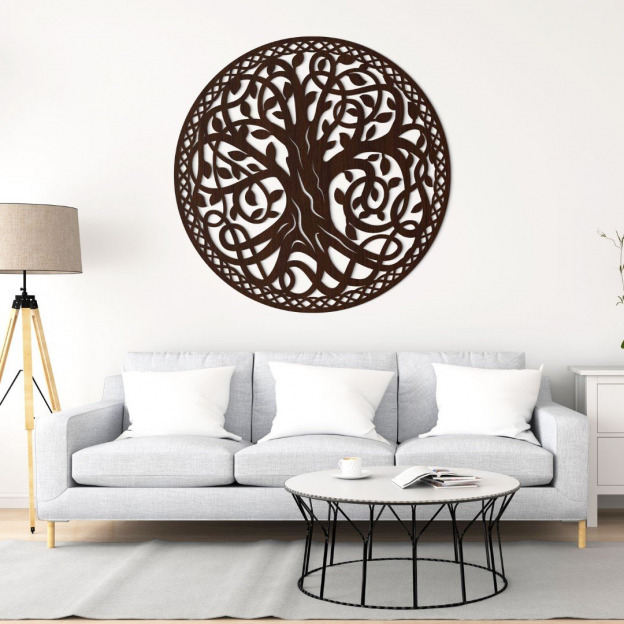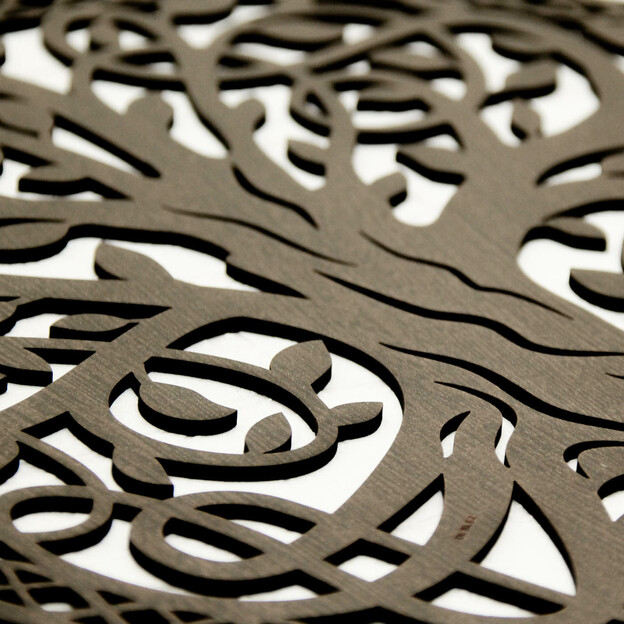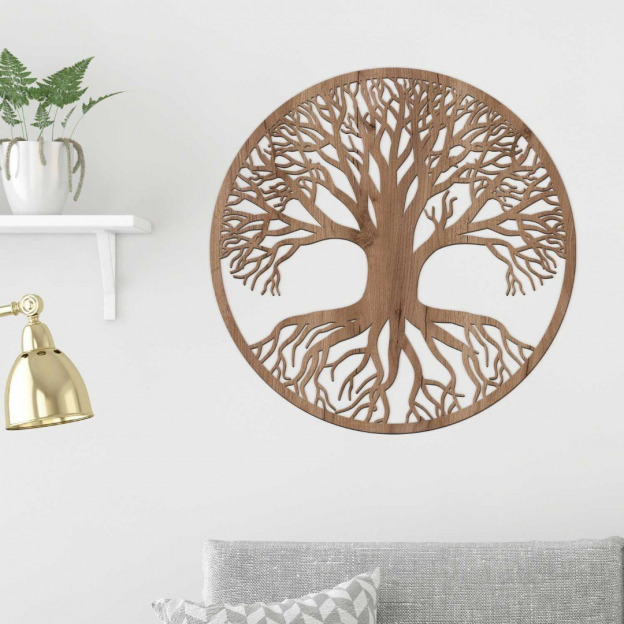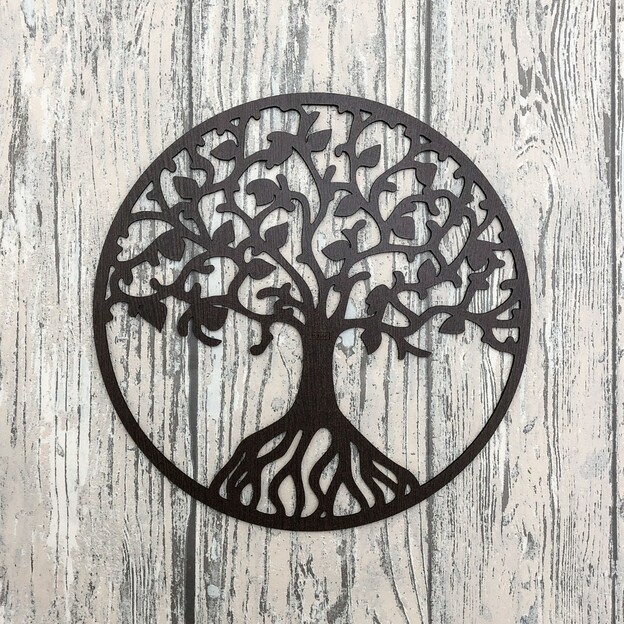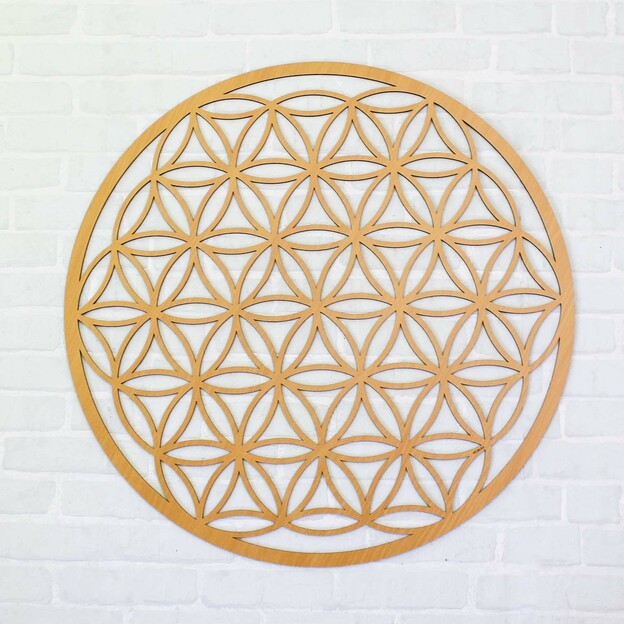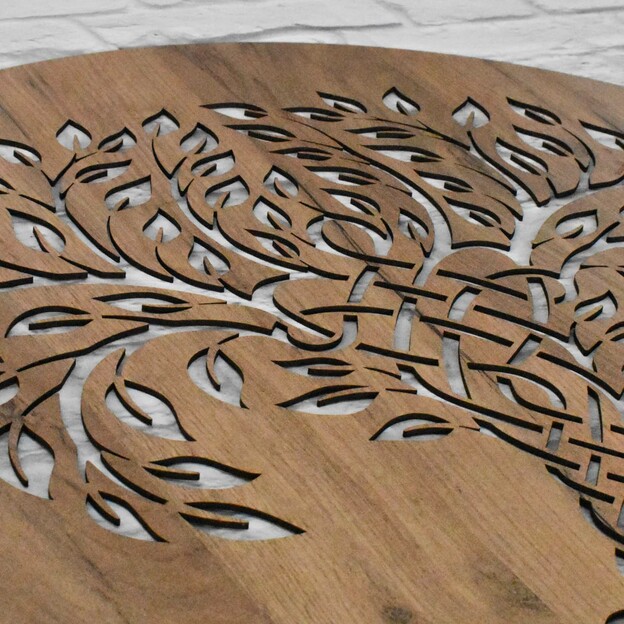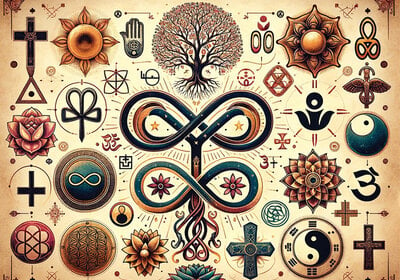
What is the Tree of Life – Everything You Need to Know About Its Meaning and Symbolism
It’s difficult to explain the meaning and symbolism of the Tree of Life in a single sentence, as it appears across many cultures and religions. Our article is so comprehensive that it provides all the essential information about Trees of Life from various perspectives.
In this article, you will learn about the following topics:
- What the Tree of Life generally symbolizes
- How various cultures perceive the meaning of the Tree of Life
1. The General Significance and Symbolism of the Tree of Life
The Tree of Life is a highly popular and universal symbol that represents various meanings across cultures and religions. It is most commonly associated with immortality or fertility. Besides cultural significance, Trees of Life also hold a prominent place in religious symbolism. The tree symbol does not belong to any specific culture, as it has been used globally for centuries.
The tree is seen as a sacred symbol, bearing many meanings in religious and spiritual philosophies. While the Tree of Life symbolizes various aspects, certain characteristics are universally shared across cultures.
The General Meaning of the Tree of Life Symbol
The Tree of Life is connected to everything. In general, it signifies the interconnectedness of all things in the universe. It symbolizes unity and serves as a reminder that you are never alone. Its roots stretch deep into the ground, drawing nourishment from Mother Earth, while its branches reach towards the heavens, absorbing energy from the sun and moon.
The Symbolic Meanings of the Tree of Life:
- Ancestors, Family, and Fertility: The Tree of Life represents connection with family and ancestors. Its intricate network of roots and branches symbolizes the growth and expansion of a family across generations. It also signifies fertility, as the tree always finds ways to continue growing through seeds or new saplings. The green leaves symbolize vitality.
- Growth and Strength: Trees are a universal symbol of strength and growth, especially tall and sturdy ones. Their roots spread deep into the soil, ensuring stability. With strong roots, trees can withstand even the toughest storms, making them a powerful symbol of resilience. The Tree of Life symbolizes growth, starting as a small sapling and gradually transforming into a majestic, strong tree. Its outward growth represents personal development, strength, and the accumulation of knowledge and experiences throughout life.
- Individuality: The Tree of Life symbolizes individuality, as every tree is unique, with branches sprouting in different directions. It represents personal growth into a distinct human being, shaped by diverse experiences. Over time, trees acquire unique features—branches break, weather takes its toll, and new ones grow. This serves as a metaphor for how we grow and change throughout life, with our unique experiences shaping our individuality.
- Immortality and Rebirth: The Tree of Life symbolizes rebirth, as trees shed their leaves in autumn and appear lifeless during winter, only to sprout fresh buds in spring. This represents new beginnings and renewal. It also symbolizes immortality, as even when a tree ages, its seeds carry its essence, ensuring continuity through new saplings.
- Peace: Trees have always evoked feelings of peace and tranquility, making them a symbol of calm and relaxation. Their tall, sturdy trunks and gently swaying leaves remind us of the soothing presence of nature.
2. How Different Cultures and Religions Interpret the Symbolism of the Tree of Life
The Tree of Life appears in various cultures and religions, and its meaning is interpreted differently worldwide. From ancient Mesopotamia and Egypt to Europe, it is present in Celtic, Norse, and Slavic traditions. In religions, the Tree of Life can be found in Buddhism, Christianity, Judaism, Islam, and Hinduism.
Let us now explore its significance, starting with the Celtic Tree of Life.
2.1 Celtic Tree of Life – Significance
The Celtic Tree of Life (Crann Bethadh in Irish) holds an important place in Irish heritage and is one of the most beloved Celtic symbols. Today, this symbol is often used as decoration or in tattoos. The true meaning of the Celtic Tree of Life lies in its symbolism.
What Lies Behind the Symbolism of the Celtic Tree of Life?
- The Celtic Tree of Life symbolizes the power of nature.
- The Celts believed trees were ancestors of human beings.
- In Celtic mythology, the Tree of Life was thought to possess special powers.
- It was customary to plant a tree, known as “Crann Bethadh” (Tree of Life), at the center of new settlements in Ireland.
- These trees served as gathering places and provided shelter and food for wildlife. The Celts understood that life without trees would be extremely challenging.
Here are some additional fascinating facts about the Celtic Tree of Life:
- Trees connected the spirit world, ancestors, living beings, and acted as gateways to other realms.
- The most sacred tree was the oak, representing the "axis mundi," or the center of the world.
- The Celtic word for oak, "daur," is the root of the word "door"—the oak’s root was literally a gateway to another realm, the fairy kingdom.
- Numerous Irish legends surround trees. For example: Sleeping under a specific tree could lead to waking up in a fairy realm.
- This is why the symbol of the Tree of Life is associated with qualities like wisdom, strength, and longevity.
- The Celts believed that cutting down their sacred tree would strip their enemies of power.
- The concept of rebirth was derived from observing the changing seasons, which were reflected in every tree (from spring to winter).
- Rituals often revolved around themes of birth, death, and rebirth. The roots of the tree were believed to penetrate the depths of the underworld, its branches stretched to the heavens, while the trunk remained in the earthly realm.
- Oaks are also known to attract lightning, a trait the Celts considered highly significant.
The Celtic Tree of Life as Home Decor/Wall Art
Besides its profound symbolism, the Celtic Tree of Life is a stunning design element for any home, especially as a carved wall art piece. At DUBLEZ, we’ve included this Celtic Tree of Life in our collection. A beautiful oak framed in a circular design inspired by Celtic culture. We named it Crann, the Irish word for tree, because its symbolism adds a deeper meaning to its presence on your wall.
2.2 Jewish Tree of Life – Kabbalah
Perhaps the most complex and intricate explanation of the Tree of Life can be found in Kabbalah, the Jewish mystical tradition that forms the foundation of Judaism and Christianity. The explanation of the Tree of Life is highly detailed, so we’ll provide only a simplified overview. For deeper exploration of the Tree of Life in Kabbalah, we recommend delving into literature that covers this topic comprehensively.
The Tree of Life According to Kabbalah
The Kabbalistic Tree of Life is derived from the Flower of Life. In Hebrew, it is a mystical symbol used to describe our spiritual journey towards God. The Tree of Life is seen as a living representation of our universe.
It consists of ten interconnected spheres (called sephiroth, meaning "spheres" or "circles"), forming the central organizational system of Jewish Kabbalistic cosmology. Each sphere possesses distinct characteristics, energy, and functions in relation to the others. These spheres are connected by 22 paths, making a total of 32 pathways, 10 spheres, and 22 connections. The connections carry specific energy. The ten spheres align with the ten archetypal numbers of Pythagorean philosophy, and the 22 paths correspond to the 22 letters of the Hebrew alphabet.
The Tree of Life encompasses all divine attributes and energies. It is considered three-dimensional and is thought to be mirrored within every human being, similar to DNA. This is because every person carries a divine spark. Our task is to successfully navigate the paths we’ve chosen for our particular incarnation. These include three paths from the material Tree of Life (one side) and three from the spiritual Tree of Life (the other side). The Tree of Life is often seen as a map of the universe, human psyche, and the journey towards spiritual enlightenment.

Source: wikipedia.org
Explanation of the Ten Spheres of the Tree of Life:
- Kether – The Crown, consciousness, and the Creator. Kether represents the beginning, the subtlest form of energy, becoming more material with each subsequent sphere.
- Chokhmah – Wisdom, energy, and the origin. It signifies the spark of thoughts and creativity.
- Binah – Understanding and structure. It reflects the development of form and order from energy.
- Chesed – Mercy. This sphere channels the energy of Binah, adding loving, nurturing aspects that bring forth creation and materialization.
- Gevurah – Severity. Balancing Chesed’s love and mercy, Gevurah brings discipline, challenges, and the need for action.
- Tiferet – Beauty. Positioned in the middle of the Tree of Life, it ensures harmony between Chesed and Gevurah, embodying balance, truth, and the heart of the Tree.
- Netzach – Victory. This sphere embodies creativity and hidden intelligence. It’s often linked to the right hemisphere of the brain and creativity.
- Hod – Splendor. Complementing Netzach, Hod is linked to reason and rationality, often associated with the left hemisphere of the brain.
- Yesod – Foundation. It represents the subconscious and human experience, preparing the groundwork for material existence.
- Malkuth – Kingdom. The final sphere signifies the physical universe, experienced through the senses and material body.
The Tree of Life describes both the origins of the physical universe and humanity's place within it. As humans evolve intellectually, their consciousness is considered the "fruit" of the physical world, enabling infinite energy to manifest in a tangible form. As creation's energy condenses into matter, it is believed to reverse its course, returning through the Tree of Life until reunification with its divine origin. A Kabbalist seeks to understand both themselves and the universe as manifestations of God, journeying through the Sephiroth to achieve ultimate enlightenment.
The Tree of Life has greatly inspired us, especially through Kabbalah. This is why we’ve named our decorative wooden wall trees after the individual spheres. Specifically, we’ve chosen the following spheres for our Tree of Life designs:
- Yesod – Representing the evolution of spirit into material form, our Yesod Tree of Life resembles a tree-like ent, blending human and tree characteristics.
- Chokhmah – Symbolizing wisdom, we designed our Chokhmah Tree of Life as a bonsai, emphasizing the wisdom that comes with age and growth.
- Binah – Representing structure and balance, our Binah Tree of Life is symmetrical and harmonious.
- Malkuth – Our Malkuth Tree of Life is the only design in our collection that isn’t framed in a circular border.
2.3 The Tree of Life in Ancient Mesopotamia
Ancient Mesopotamia, located in Assyria (the northern basin of the Tigris River in Asia), dates back to around 10,000 BCE. Here, we can observe the so-called Assyrian Tree of Life, represented as a series of knots and intersecting lines forming the tree itself. It was an important religious symbol found on the walls of Assyrian palaces. On either side of the Tree of Life stood protectors, often depicted as winged human genies or eagle-headed spirits. These protectors were shown bringing water to the tree in buckets, as seen in illustrations. If one hand held a bucket while the other was raised with a cone, it symbolized an act of blessing.
It is believed that these buckets contained either pollen (for fertilization) or holy water. Above the Tree of Life was a king, who was blessed or anointed with this sacred bucket. Assyriologists have not identified a specific name for this symbol, which is why it has been referred to as the "Tree of Life."
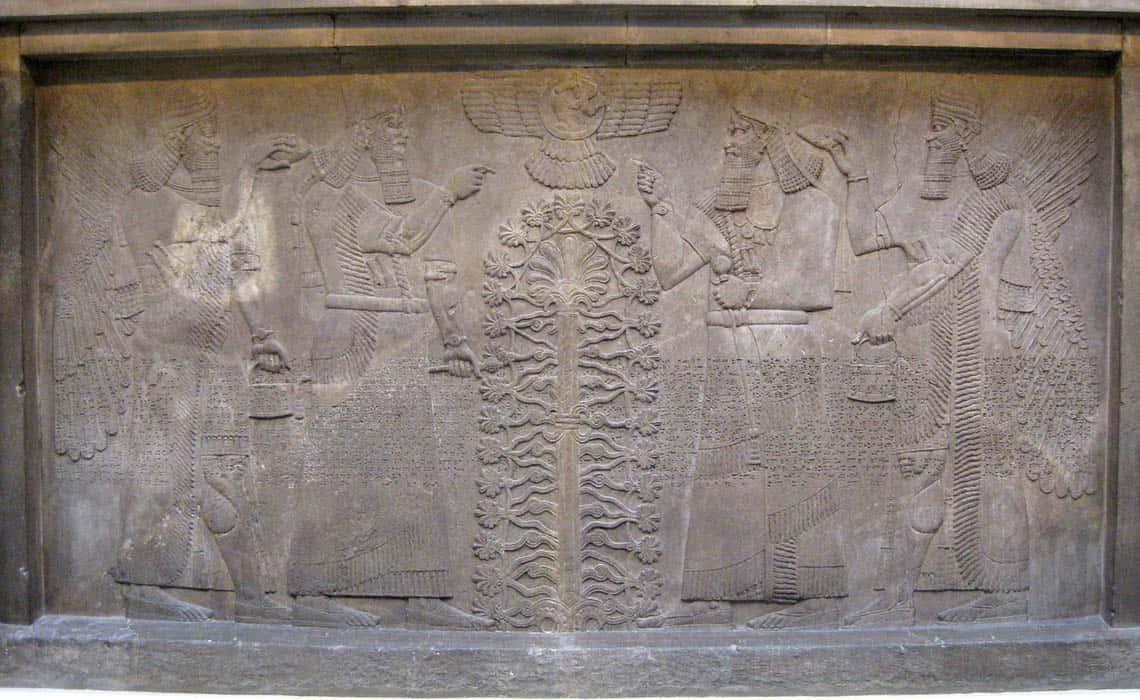
Source: britishmuseum.org
2.4 Buddhism and the Tree of Life
In Buddhism, the Tree of Life is known as the Bodhi Tree and is believed to be the tree of enlightenment. Under this tree, Buddha attained enlightenment, making it a profoundly sacred symbol.
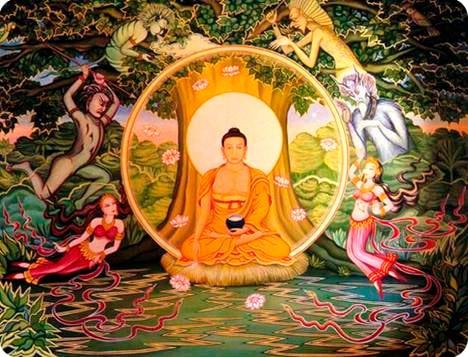
Source: wikipedia.org
2.5 Chinese Tree of Life
In Chinese mythology, the Tree of Life is often depicted as a peach tree guarded by a dragon and a phoenix. The dragon is revered in Chinese culture as a symbol of immortality. This mythical tree is said to produce peaches only once every 3,000 years. In Taoism, it is believed that consuming this magical peach grants immortality.
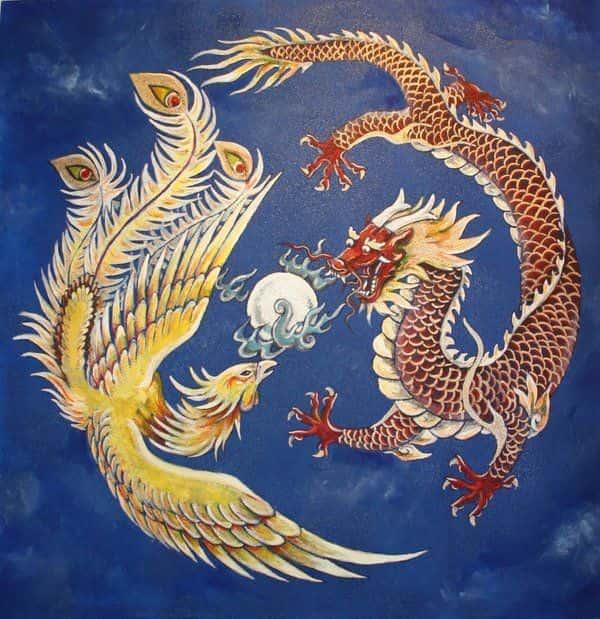
Source: pinterest.com
2.6 Christian Tree of Life
The Tree of Life is mentioned in the Book of Genesis, where it is believed to have been planted in the Garden of Eden. Its fruit was said to grant eternal life or immortality. To prevent Adam and Eve from eating from this tree after consuming the fruit from the Tree of Knowledge of Good and Evil, God expelled them from the Garden of Eden.
In Christianity, the Tree of Life symbolizes humanity free from sin and corruption. In Mormon theology, the Tree of Life represents divine love. Additionally, the tree is mentioned in the Book of Revelation, where it is associated with healing properties.
2.7 Norse Tree of Life and Mythology
In Norse mythology, Odin is the god who governs all magic and protects the great well of wisdom and knowledge located at the roots of the world tree, Yggdrasil. The strength of Yggdrasil supports the entire universe. Beneath its branches, Odin becomes an initiated magician, discovering shamanic practices, inner sight, and healing abilities.
Yggdrasil’s branches extend into the spiritual realm of Asgard, representing the higher self. The middle region of the tree symbolizes Midgard, the world of human ego and personality. Its roots reach into the underworld, inhabited by dwarves and spirits, representing shadows and subconscious senses. Yggdrasil is a powerful axis, connecting three planes of existence.
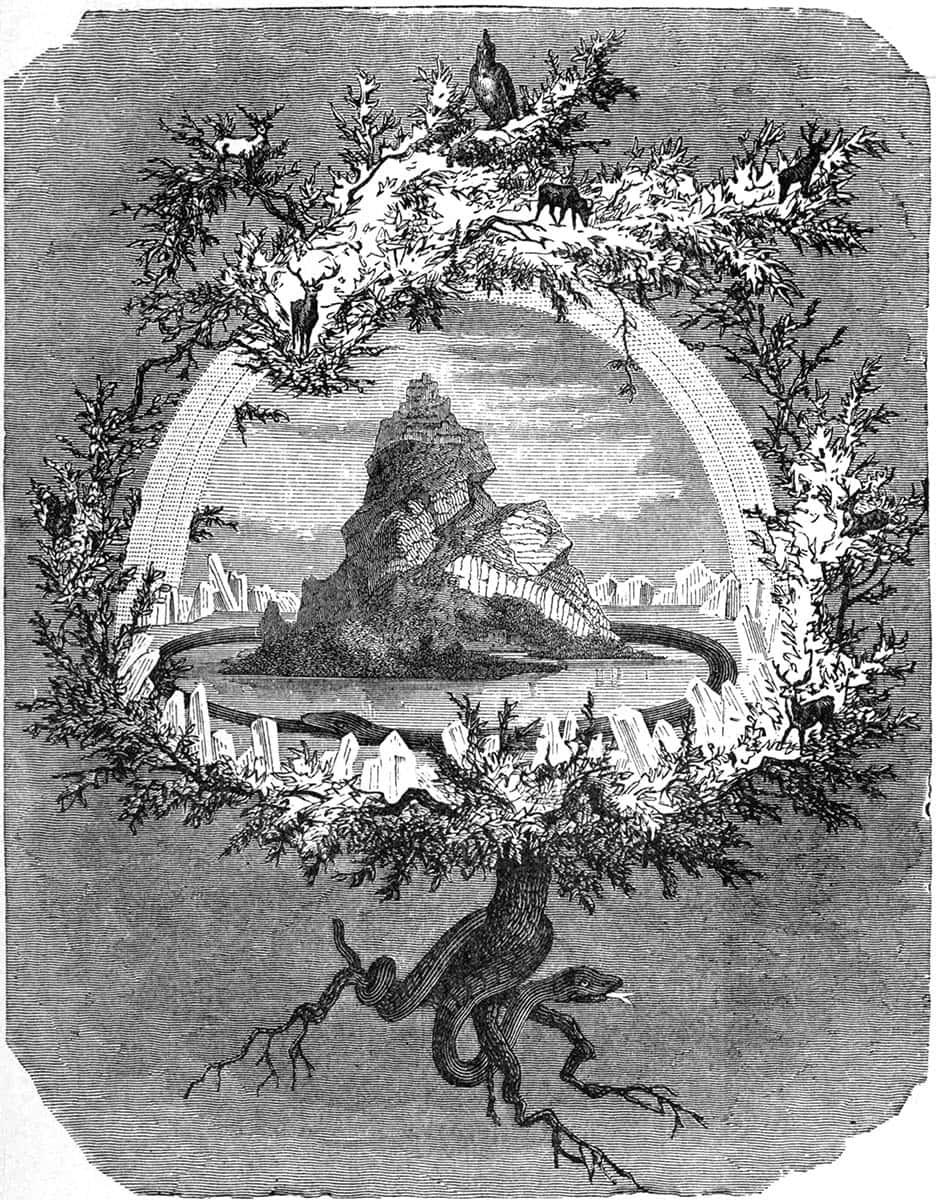
Source: wikipedia.org
2.8 Mayan Tree of Life – Meaning
In Mayan mythology, the Tree of Life, known as Yaxche, played a vital role in their cosmic worldview. The Maya believed the Tree of Life represented the structure of the universe, connecting its three main realms: the celestial realm, the terrestrial world, and the underworld, known as Xibalba.
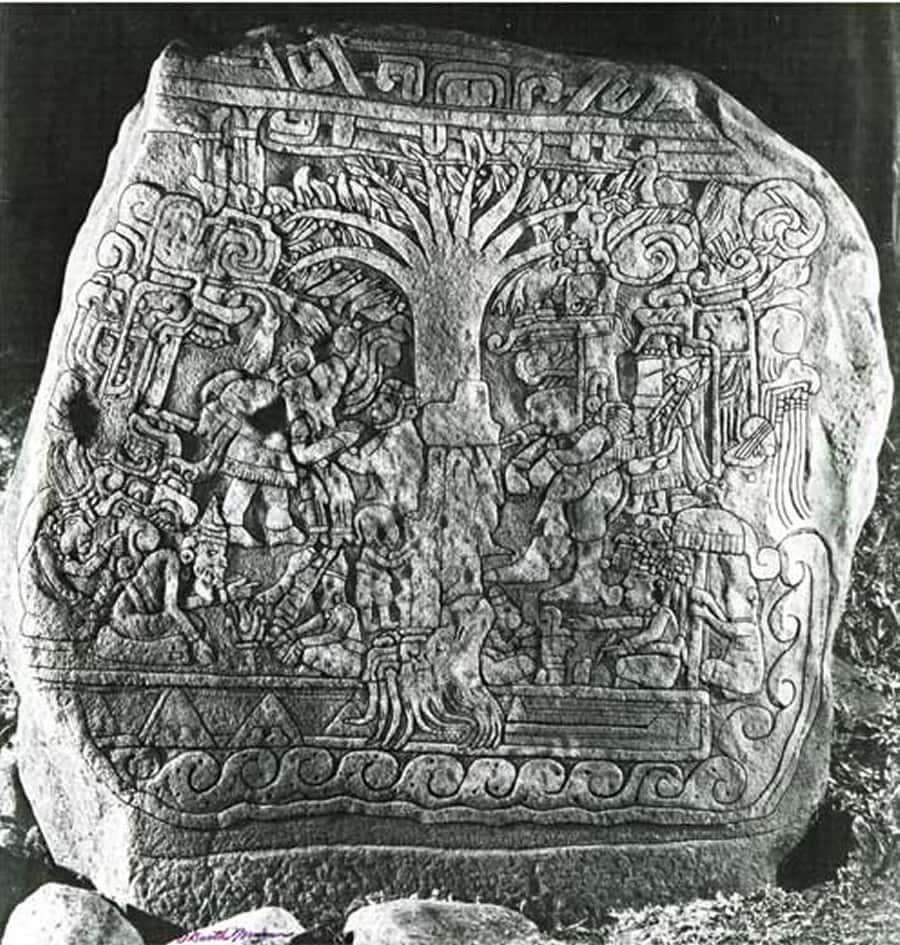
Source: pinterest.com
Connection Between Three Realms
The Maya believed the sacred Tree of Life emerged from the underworld, as illustrated in stories such as the Hero Twins and other Mayan myths. According to their beliefs, the tree originated life on Earth during its ascent, and later initiated the movement of stars and celestial bodies.
The tree was thought to rise further into the sky, eventually reaching the celestial realm, where it set the heavens into motion, shaping the Mayan cosmos. In this way, the Maya viewed the sacred Tree of Life as the vertical axis connecting all three cosmic realms.
Representation as the Ceiba Tree
The Maya considered the Ceiba tree to be the real-world representation of their sacred Tree of Life. This tree was planted in every Mayan settlement and city. Its tall, straight trunk symbolized the vertical axis uniting the three realms. Mayans believed its canopy, with branches extending in all directions, represented the four cardinal points.
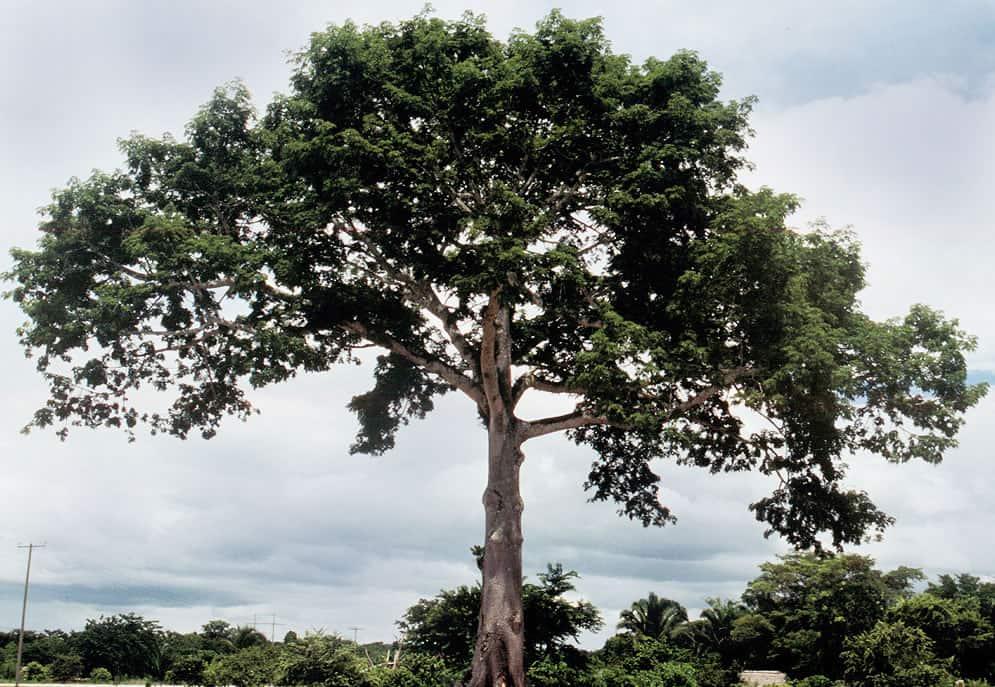
Source: pinterest.com
The Ceiba’s massive roots were believed to host bats, creatures often associated with the underworld in Mayan mythology. This further reinforced its symbolic connection to Xibalba, the Mayan underworld.
2.9 The Tree of Life in Islam
In Islam, the Tree of Life is referred to as the Tree of Immortality in the Quran. It appeared in Eden, where Adam and Eve ate from it despite Allah’s prohibition.
2.10 Slavic Tree of Life
In Slavic mythology, the Tree of Life represents the world axis, the center of the world, and the embodiment of the universe as a whole. Its crown reaches the heavens, and its roots dwell in the underworld. The Tree of Life is a prominent motif in the folk traditions of Russian, Belarusian, Ukrainian, Polish, Slovak, Czech, Slovenian, Croatian, Serbian, Bosnian, Macedonian, and Bulgarian cultures.
The vertical axis of the tree (reaching from earth to heaven) and the horizontal axis (representing the journey) are combined in this image. For instance, in Belarusian folklore, the Tree of Life was closely linked to wedding ceremonies: a bride’s horses were not to be placed under an "unlucky tree" but instead where bees brought honey, flowing down to the tree's roots.
In many Slavic fairy tales, the Tree of Life is where Slavic gods and saints reside. At its roots lives a demonic creature—a snake, often a manifestation of the god Veles. In Slavic wedding folklore, the Tree of Life often symbolized fertility in nature.
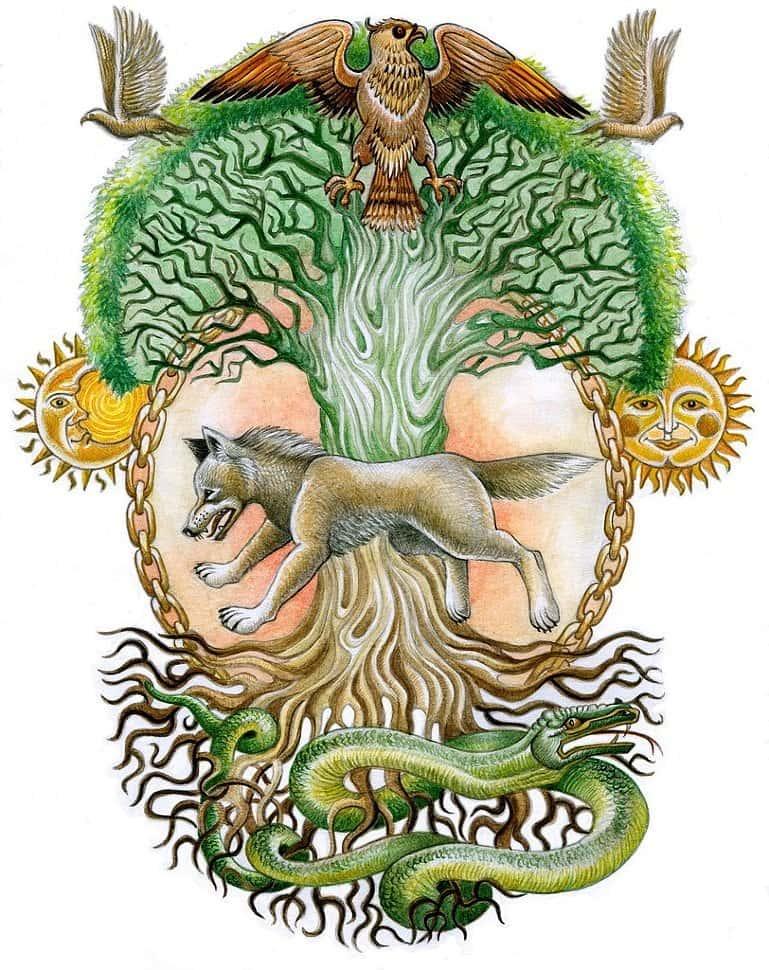
Source: pinterest.com
Trees of Life by DUBLEZ:































































